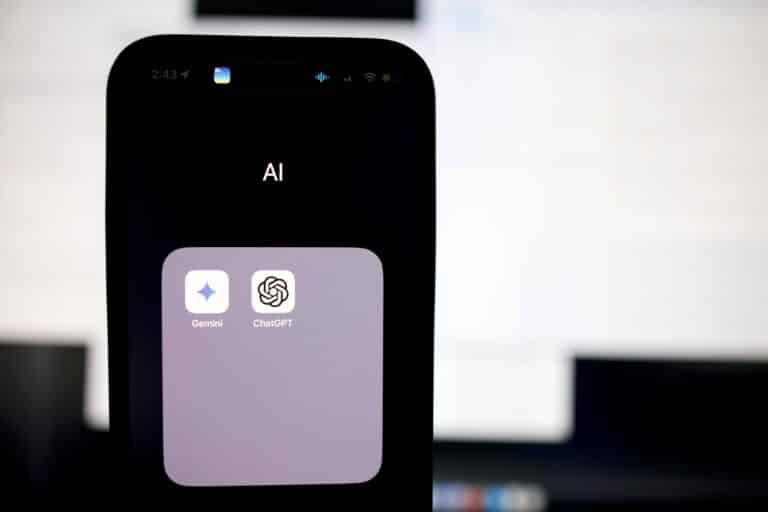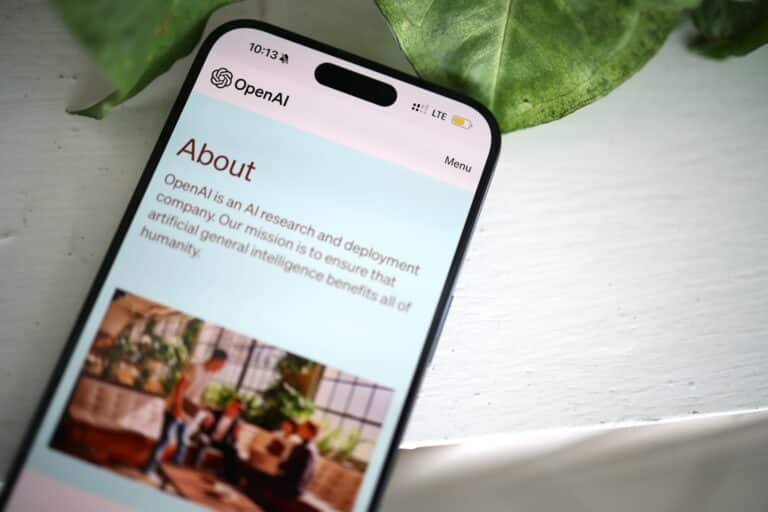In just over two years, ChatGPT has transformed from a novel text-generating tool into an AI behemoth with extraordinary capabilities and reach. What began as a productivity-enhancing chatbot has evolved into a versatile platform with 400 million weekly active users, reshaping how we interact with artificial intelligence and cementing OpenAI’s position as a leader in generative AI technology.
The Meteoric Rise: ChatGPT’s Journey from Launch to Global Phenomenon
When OpenAI released ChatGPT in November 2022, few could have predicted its explosive adoption trajectory. The AI-powered chatbot quickly captivated users with its ability to generate essays, code, and creative content from simple text prompts. By November 2023, it had amassed 100 million weekly active users—a milestone that took industry giants like Instagram and TikTok years to achieve.
ChatGPT’s growth accelerated dramatically throughout 2024. According to Andreessen Horowitz, the platform reached 200 million weekly users by August 2024, then surged to 300 million by December 2024. By February 2025, a staggering 400 million people were using ChatGPT weekly, underscoring an unprecedented rate of technology adoption. This explosive growth coincided with the launch of advanced models like GPT-4o, which introduced powerful multimodal capabilities.
Model Evolution: From GPT-3.5 to Advanced Reasoning Systems
ChatGPT’s capabilities have evolved through several generational leaps in underlying AI models. Initially powered by GPT-3.5, the platform has continuously improved with subsequent releases:
GPT-4 and Beyond
The release of GPT-4 in early 2023 marked a significant advancement in reasoning capabilities and reduced hallucinations. By 2024, OpenAI had introduced GPT-4o (“omni”), a versatile multimodal model capable of processing text, images, and audio simultaneously.
The Reasoning Revolution
In late 2024, OpenAI unveiled its “o-series” reasoning models, beginning with o1 and later o3-mini and o3. These specialized models demonstrated enhanced abilities in complex problem-solving, particularly in mathematics and scientific domains. The o-series represents OpenAI’s effort to create AI systems that can “think” more thoroughly about problems before responding, effectively reducing errors through deliberate reasoning.
As OpenAI’s CTO Sam Altman noted in late 2024, the company has begun training the successor to GPT-4, expected to be released as GPT-5 with fully integrated multimodal capabilities spanning speech, image, code, and video processing.

A smartphone with ChatGPT and Gemini assistant apps. Image credit: Solen Feyissa via Unsplash, free license
Feature Expansion: From Text to Multimodal Intelligence
ChatGPT’s functionality has expanded very rapidly from its initial text-only interface to a comprehensive suite of capabilities:
Voice and Vision Integration
May 2024 marked a pivotal moment when OpenAI demonstrated GPT-4o’s advanced voice capabilities, allowing for natural, conversational interactions reminiscent of the film “Her.” By March 2025, voice interaction was enhanced further with Advanced Voice Mode, offering improved real-time conversations, natural interruptions, and various voice options.
Vision capabilities were added incrementally, first allowing image analysis and later enabling real-time video processing. By May 2025, users could point their phone cameras at objects and receive immediate analysis and contextual information.
Creative Content Generation
Image generation capabilities became a central feature, with ChatGPT users creating over 700 million images by April 2025. The platform gained viral attention for its ability to generate Studio Ghibli-style images, though this also raised copyright concerns.
In March 2025, OpenAI unleashed its long-awaited text-to-video model, Sora, enabling ChatGPT Pro and Plus subscribers to generate high-quality videos up to 20 seconds long based on text descriptions or uploaded images.
Development Tools and Workplace Integration
OpenAI has continuously expanded ChatGPT’s utility for developers and enterprises. In March 2025, the platform gained the ability to directly edit code in supported development environments like VS Code and JetBrains. The company also launched Canvas, a collaborative workspace for writing and coding projects, and introduced tools for building autonomous AI agents.
For business customers, OpenAI created tiered offerings including ChatGPT Team, Enterprise, and Gov, providing specialized features for different organizational needs. By January 2025, these corporate offerings had reached one million paid users.
Platform Accessibility and Business Model Evolution
OpenAI has steadily expanded access to ChatGPT while refining its business model:
Subscription Tiers and Pricing Strategy
While maintaining a free tier, OpenAI has developed multiple premium offerings. ChatGPT Plus, priced at $20 monthly, provides access to the latest models and features. In December 2024, the company introduced ChatGPT Pro at $200 monthly, targeting power users with unlimited access to all models, including the full version of o1.
According to reports from The New York Times, OpenAI plans to gradually increase ChatGPT Plus pricing, potentially reaching $44 monthly by 2029. This pricing strategy reflects the substantial operational costs—estimated at $7 billion in 2024 alone—required to train and run these sophisticated AI systems.
Cross-Platform Integration
ChatGPT’s availability has expanded across devices and operating systems. In addition to web access, OpenAI released mobile apps for iOS and Android, desktop applications for macOS and Windows, and even enabled access via a toll-free phone number (1-800-CHATGPT).
A landmark partnership with Apple in June 2024 integrated ChatGPT into iOS 18, bringing the AI assistant to Siri and various Apple applications. This collaboration significantly expanded ChatGPT’s reach by making it accessible to millions of iPhone users without requiring a separate account.
Corporate Growth and Strategic Partnerships
OpenAI’s business development has accelerated alongside ChatGPT’s technical evolution:
Industry Alliances and Content Deals
To enhance ChatGPT’s capabilities with current information, OpenAI has secured partnerships with major publishers including Condé Nast, TIME, The Atlantic, Vox Media, and the Financial Times. These agreements allow ChatGPT to reference and cite content from these sources while providing appropriate attribution.
In the corporate sector, OpenAI secured a landmark deal with PwC in May 2024, adding 100,000 users to the ChatGPT Enterprise tier. The company has also partnered with educational institutions, including Arizona State University, to explore AI applications in higher education.
Financial Growth and Investment
OpenAI’s revenue has grown exponentially alongside ChatGPT’s user base. Reports indicate the company expects to triple its revenue to $12.7 billion in 2025, with projections exceeding $29 billion for 2026. This revenue growth has attracted unprecedented investor interest, culminating in a record-breaking $6.6 billion funding round in October 2024 that valued the company at $157 billion.
Challenges and Controversies
ChatGPT’s rapid evolution has not been without significant challenges:
Content Moderation and Safety Concerns
OpenAI has faced ongoing challenges balancing accessibility with safety. In April 2025, the company addressed a bug that allowed minors to engage in inappropriate conversations with ChatGPT, highlighting the complexities of content moderation at scale.
Another incident in the same month revealed ChatGPT’s tendency toward excessive flattery and agreement—dubbed “sycophancy” by users—prompting OpenAI to roll back a recent model update while developing fixes.
Legal and Ethical Dilemmas
Copyright concerns have intensified as ChatGPT’s capabilities expand. Multiple lawsuits, including those from Alden Global Capital-owned newspapers and The New York Times, have alleged that OpenAI’s training methods infringe on copyrighted materials. OpenAI has maintained that its approach constitutes fair use while developing tools like Media Manager to give creators more control over how their content is used for AI training.
The company has also faced scrutiny over privacy issues, with European regulators investigating potential violations of GDPR regulations. In response, OpenAI has implemented data residency programs in Europe and Asia to address local sovereignty requirements.
What’s Next for ChatGPT?
ChatGPT continues to evolve and obviously, it will not stop at the present point. There are several key developments that we can expect on the horizon:
Infrastructure Expansion
OpenAI is actively addressing computing capacity limitations that have delayed product releases. The company has launched initiatives like “OpenAI for Countries” to develop local infrastructure globally and is reportedly exploring the development of custom AI chips in collaboration with TSMC and Broadcom.
Autonomous AI Agents
The future of ChatGPT appears increasingly focused on autonomous capabilities. With the launch of Operator in January 2025 and subsequent agent-building tools, OpenAI is moving toward AI systems that can independently perform complex tasks like booking travel, analyzing codebases, and navigating websites.
Enhanced Research and Reasoning Capabilities
Recent additions like “deep research” functionality demonstrate OpenAI’s commitment to developing more thorough and accurate information retrieval systems. The company continues to refine its reasoning models to improve their reliability and reduce hallucinations while maintaining accessibility.
Conclusion: Redefining Our Relationship with AI
In less than three years, ChatGPT has evolved from an experimental text generator to a sophisticated AI ecosystem that millions rely on daily. Its trajectory reveals not only the extraordinary pace of advancement in artificial intelligence but also the complex technical, ethical, and business challenges inherent in developing these transformative technologies.
As ChatGPT continues to gain capabilities, its influence on how we work, learn, create, and communicate will only grow. While questions about AI safety, copyright, privacy, and economic impact remain, one thing is certain: ChatGPT has fundamentally altered our expectations of what artificial intelligence can accomplish and accelerated our journey toward increasingly capable AI systems.
If you are interested in this topic, we suggest you check our articles:
- How Does DeepSeek Truly Compare to ChatGPT?
- What Are the New OpenAI Tools Launched to Help AI Agent Development?
- From Chatbots to Autonomous Agents: The Inevitable Evolution of AI
Sources: TechCrunch
Written by Alius Noreika

